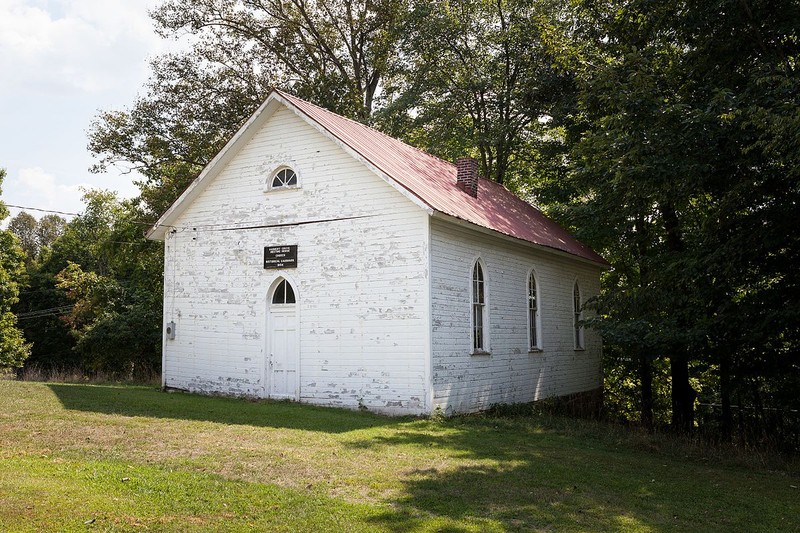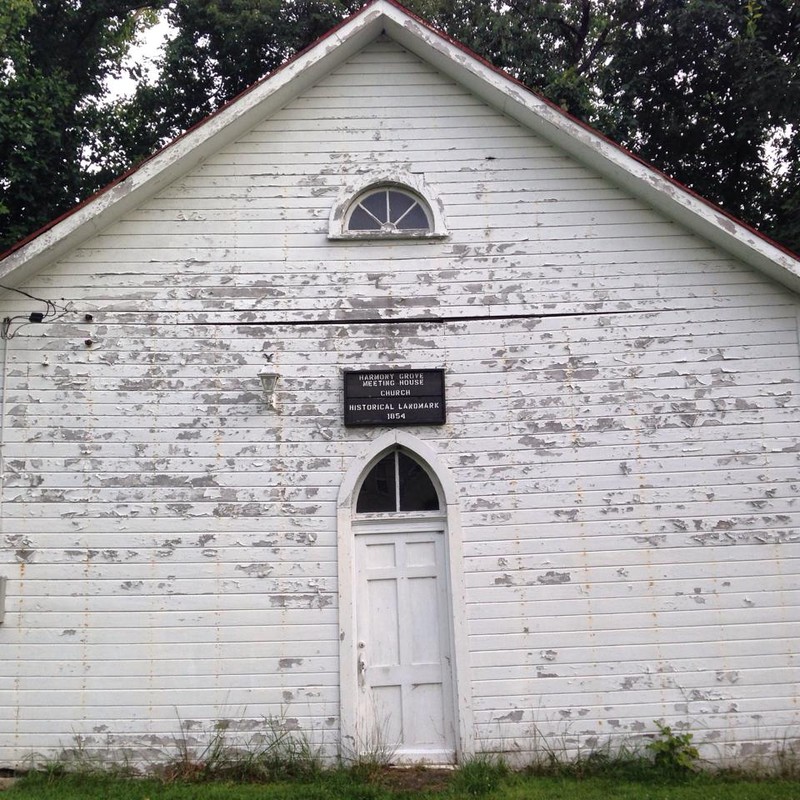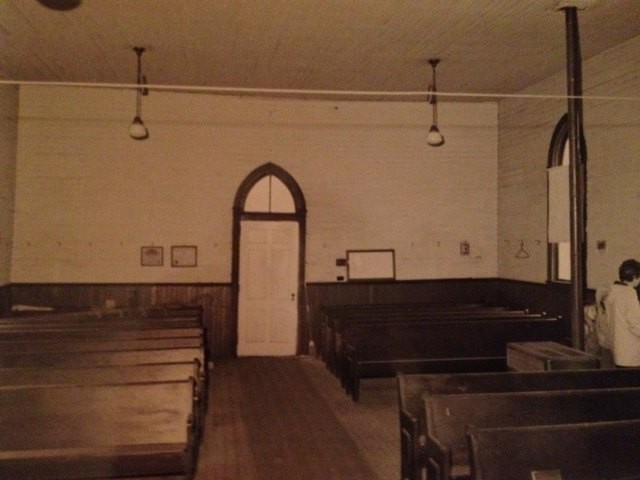Harmony Grove Meeting House
Introduction
Text-to-speech Audio
Images
Harmony Grove Meeting House

Front view of building.

Pews from the Church

Backstory and Context
Text-to-speech Audio
First settled by Virginian Isaac Van Camp some time before 1800, the Harmony Grove farming community encompassed roughly thirty families. Following the destruction of the original Harmony Grove Presbyterian church in an 1845 fire, the new Harmony Grove Meeting House was built in 1854. Due to the small population of the area, construction of the building was completed jointly by Presbyterians, Baptists, and Methodists. The building is a simple one-story wooden structure. It is supported by a roughly hewn stone foundation and measures twenty by fifty feet. A gabled tin roof extends slightly out over three gothic-arched windows on each side, and the roof is capped by a brick chimney on each slope. All materials are original to the building. Though the paint is peeling and some walls have been claimed by ivy, the church remains in remarkable condition considering it has been standing for over a century and a half.
A constitution was created during construction of the Harmony Grove Meeting House which adjudicated usage rights of the building. The first resolution barred Roman Catholics from using the building in any capacity, a reflection of broader Protestant beliefs in the United States that Roman Catholics were detrimental to the fabric of society. Subsequent resolutions established a system of rotating Sunday usage. Methodists were allotted the first Sunday of each month, Presbyterians given the second, and Baptists allocated the third. The fourth and occasional fifth Sundays were “to be left open to any Protestant Minister of good standing in his own church.”1 A final resolution decreed that the building be used for education during the week. The constitution adopted by the Harmony Grove community was quite typical for the time. In such small and isolated communities, it was not feasible to construct multiple places of worship, nor was it necessary to construct a separate schoolhouse.
Despite the provision establishing the Harmony Grove Meeting House as a schoolhouse, it does not appear to have been officially used as one until the Monongalia County school system expanded to include Harmony Grove in 1864. Furthermore, the Board of Education purchased the lot adjacent to the Harmony Grove Meeting House and constructed a schoolhouse in 1871. Thus, if the church was ever used as a schoolhouse, it was only for a brief period seven-year period between 1864 and 1871.
Though various Protestant denominations continued to use the Harmony Grove Meeting House as a church into the early twentieth century, by 1913 Methodism had become the prevailing denomination in Harmony Grove. Methodist preachers continued to use the building as a church until it was closed in 1979. Over the course of its 125 years of operation, the Harmony Grove Meeting House served a wide variety of functions. “The building sheltered parties, spelling bees, corn huskings, quilting bees, apple parings, and cider parties… the green between the school and the church was the scene of weddings, picnics, and festivals.”2 The religious and pedagogical functions of the Harmony Grove Meeting House represent only a portion of its local impact. It served as a holistically vital nucleus to an isolated but vibrant community.
Sources
Harmony Grove Meeting House. Facebook. 2017 Accessed: 01 Nov. 2017. https://www.facebook.com/harmonygrovemeetinghouse/.
1, 2. Moore, Dorothy J. Harmony Grove Meeting House, National Register of Historic Places. July 13th 1983. Accessed July 9th 2020. https://npgallery.nps.gov/GetAsset/e34496c8-62bc-461b-8b51-6f38f9105700.
